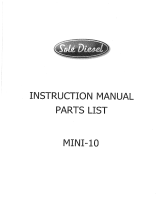
Schematic
Diagram
~
__
g2_~:S
'
f':!9]JL5.",
Pd
J3U!,
D
Ei:=:i
c)lv
1'/
£;"._I{:L_£~~Eg~!2_?!!~
I./'X,
®
A;,N,
,9..r:(-,;.?,P,-!':.,.,:"'«.irc,,_
,r,f.f!:'r:,
f"§;.J/f;;,fAI.(!OP
_IN..
T'HIS
liNE
TO
PISt:orY/IEer
~i!:.;fS;;::;;~:::
i~~~;S'~'S~ff
J1:eff1:;~Ijjj~
1~~".e~;'p~12fy~c;J'=::H~;:AW
:~OO--TO
,3Q9-A----;;;,P5::-V,:('u:;;':c-fi;';;Kfl:'--G-~--rrlto:
DI-i";>,.7fo';--OF
fNOIVIPr.>AL
CBANKI'"i.:<'
CYCi.E$
SI./OUZD
'N-o'r'£x;::iii,o'
5'0
'SEaWDS,
A
SINlrCfI
WITH
CONTiNUOUS
--
IiiATlNc---o"F'
!7!'[_~'::!-'::§
__
6E
__
!~.c!P~
__
'!Y!!-J.,
IV
2.,f:?;;A!7?-;;;;;-RV€r;;~ruNCTlI)NS
,
?:_'"-L
~'_"-0~---.5wlrQL~i!§L
:";!!!V:~~
__
f!.£':!.~O
TO
·fI:t'~L:~Z:::~E.
__
}-:".eT}!!~
___
C;~€,,£,,!_T..
Q!Ij_~~~
__
,-!""::f2.-!-tf._5_,:
(1')
W-":E/Y!':!.§i;
6;;;~Z=£;';~1;:'i?~;':CC'A'''',§''--LE"",,,~R,
©
""'-_~_~
___
JL€..!-:i!J~?i_L/'F'.e
I!!.E?CI..I.!_C3:.Ii
__
£NGI/\/E
8t..
0
cj<;
•
©
FOR
WIRiNG
OF
AUX'IUA!2Y
ALTEG?NATO,eS
SeE
!:.NE
t..0tLOW~,!£.!?!!;§RAUS_
NOTO!i?O~A
/3~AMP
_
".232.
;';~OTOROt.'A.
l20
A':-(P,
1123
I
~ii§!::£
--!!...€:/iZu::
_£i.~'::!i,
__
'§.f535_
L~:,,€
C c -
"!.§.YL'-_'-'%_..!o
~..A,:::!£"
.!..6
~
" 4
®
IF
j\[)DlfiO:'-(AI...
?RES~UR£.
SWIT(~tI£S
ARtE'
Req'p
TO S
TAFT
£}.,?:,",r:..~_C;_c:_E..:!~Ii!j~-:s.~~~£-z..l;,;;''--?:Zii_
h;OS§";:"'US-~:f!:~~!?PN
'ZRO-0
(HE
OIL
PR£SSURE
1\·IANI}"OLD
TO
A
NEIlRt'!>y
aut-KHEAO
AN.£>
A-I~Z--';;;R£SSU;;;;E-'sWir(NES
I0QUNTl'D.~
8ULl<'ff~,!!~e..~~-~
®
A.!:~t:','::.:L,.'!./J~!c.!i!!.~£R
J;§..i-!.!..
NOUNo._,C~~STlC.!SPI.ICE
£tECTRICAL
T
A,
c..€.".f::,,'??f:!t:!J?'._C.o!'!.'Y.~
£.
0Z!?Lc:..ON
"!..(:!,c
Te£;
_
@
CAUTION:
16
'[1:!/$.
PRObUcr
IS
PROTCC
CIi!:?,,_~-,'(.:':"'.M-:::I:!J!.!c.l:
..
.!'..!!..~_'!..'(
C;II£'-
u I
f:..j:?_f!E!:.J5_~~.2..<;'~I.£'..!2...!'!!'!~RJJ:!£
S
TA
R T
€.!!....!'~:£_".~
C
LOS:::
TO
THe
SOURCE
OF
CURRENT
AS
POSS't8L€.
>
EIr.----eii5SIVE
cURR"ii"""Nr
l>1?A";{'A--;:;-y~rHe
INSTRUMENT
PANEf-,
'E!.!1!_!.--,,::{g,--,-.Q{L:iiii;,!'(ji!.~~~i!.~~ii,---{it.
__
rf!.€._eM.€~KU
To..",lX.!P,
IN' 'Hi'r.!:VENr,
"1ps.r:.1:£:friLrL!$..
,/YIOP£($
__
YYJ!,~"Jb'..!/T.._
f:>Qy:(N
__
"f2§.c:.~us£
TH!£....gpef'-!<=D
?!S£A
KER
J:>jcI.C_q~-''f.F._,"T.:f
__
ll:r.€.I!?"E!!.!f..f_,,:fl.!.;:;{':L
Y.
THEREFORe
me
t?'!i~J?.E£g
!
QWNEI2
/>-fl.JfT
Bg
__
d.t,!.if'€.
..
&~r._.'CI"!E:
__
,..lNsrRUMEN
r
;:y,..!i!!'!::::.)
!y
{i2ING
~!Z
.
.£--'Y.<Z'!'!..t;_~_I£f:!._!."-'-
JEAj=_f::_'!!P..
__
!..'?..f'."!§
VENT
(CON
TA C r
!2..i!i!.
WEEN'
~t.
eC,(,R
Ie
At-
_fJl'c.
V.!.t;..f!.
._~.£_,J,""_'-T
W!!.C€t!!..'
fb~r;;
I
'0
~
I
I
,
,
~
,
,
ITEM
DESCRImoN
,
~
i~
I
,
IJ
H
WCA:;;A"K,,~KJ
W
kP
~
IN;;"~
~
I",
,::;;'c';::,
it
;;,'
:'~OA;:
~
12:22~B41~
33585

























